

Vendors selling seafood at a fish market in Bergen. kross13/Shutterstock
Abundant seafood, regional specialties such as reindeer, and an ever-growing trend towards cutting-edge cooking using hyperlocal, seasonal ingredients make eating in Norway a locavore’s delight. Whatever your favorite flavor of culinary experience, your taste buds are covered here, from traditional Norwegian dishes in down-to-earth cafes to up-to-the-minute gastronomic trends in sleek surroundings.
It’s worth noting that many restaurants change their menus regularly (sometimes weekly), which is excellent for seasonal variety, but it does mean that some famous Norwegian classics might not be available year-round. These are the best things to eat when you visit Norway.
Go wild for reinsdyrstek (roast reindeer)
Reindeer is something every non-vegetarian visitor to Norway should try at least once, but you'll likely want to order it again as it’s one of the tastier red meats. It’s exceptionally lean with a gamey flavor, but it’s much milder than venison – have it roasted for a tender treat. It will typically be served with mashed potatoes, peas and lingonberry jam.
The vast majority of the reindeer in Norway are raised by traditional Sami herders in the north of the country. They’re effectively wild, making reindeer a sustainable, healthy option if you choose to eat meat.
Where to try it: Unsurprisingly, you’ll find that reindeer is more prevalent on menus the further north you go. Head for Emma’s Drømmekjøkken in Tromsø.
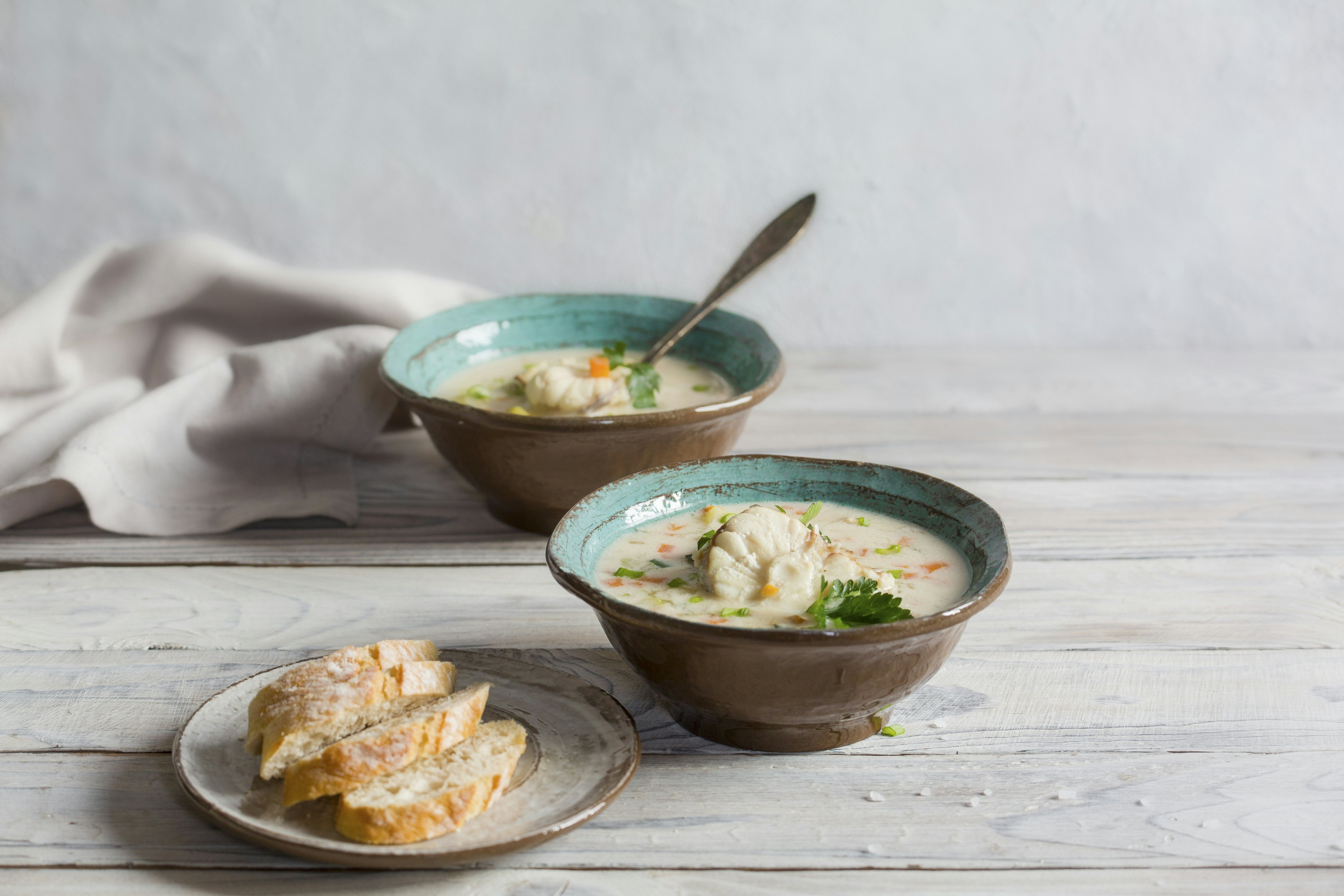
Warm your frozen fingers with a mug of fiskesuppe (fish soup)
Norwegians are huge fans of this warming soup, generously loaded with chunks of fish such as salmon and cod, shrimp, root vegetables and cream. Given the abundance of the soup’s ingredients locally, it’s often one of the least expensive items on the menu, but it’s no less tasty and filling for it – especially when you mop it up with a hunk of warm fresh bread.
Where to try it: It’ll be on the menu in restaurants and cafes in any coastal town (and inland, too), but Bryggeloftet is Bergen’s oldest restaurant and a particularly atmospheric option.

Discover the simple flavors of fårikål (lamb stew)
This simple, hearty stew is Norway’s national dish. There are only a few ingredients – various cuts of lamb, lots of cabbage, water, and some salt and pepper – so using top-quality meat and having the patience to let it simmer for hours is what will make for a mouth-watering meal.
Fårikål is a comforting family one-pot wonder, usually eaten with boiled potatoes and flatbrød (a kind of crispbread). These days restaurants sometimes offer a twist on the classic, perhaps with extra veggies or by adding beer for a richer flavor.
Where to try it: Look for restaurants specializing in old-school Norwegian fare, such as Kaffistova in Oslo. It tends to feature on seasonal menus in autumn, and there are few better places to try Norwegian lamb dishes than on Lofoten – try Børsen Spiseri.
Celebrate with a bowl of bidos (Sami reindeer stew)
In the far north, particularly if you're fortunate enough to be invited to a Sami celebration, you'll come across this traditional stew made with reindeer, carrots and potatoes, all slow cooked together for maximum taste. It’s traditional for Sami people to eat this flavorful meal at weddings and other special occasions.
Where to try it: You’ll find this dish on restaurant menus across Finnmark, particularly in Kautokeino and Karasjok, home of the Sami parliament. But for the full cultural experience, as well as a plate of bidos, plan your trip around Sami Week in Tromsø.

Try savory-sweet brunost (brown cheese)
Made with whey, cream and goat's and/or cow's milk, brunost isn’t so much a Norwegian staple as a national institution. This (technically-not-cheese) cheese has a tangy yet sweet, caramel flavor and a fudge-like texture.
Gudbrandsdalsost (produced by the company Tine) is arguably the most famous kind and is made using a combination of goat's and cow's milk. Geitost uses only goat’s milk, while fløtemysost uses only cow’s milk. Whatever the variety, if you like the unusual taste, eat it for breakfast on a slice of bread or a waffle.
Where to try it: Pick up a block from Norwegian supermarkets and farm shops or try it at your hotel’s breakfast buffet.
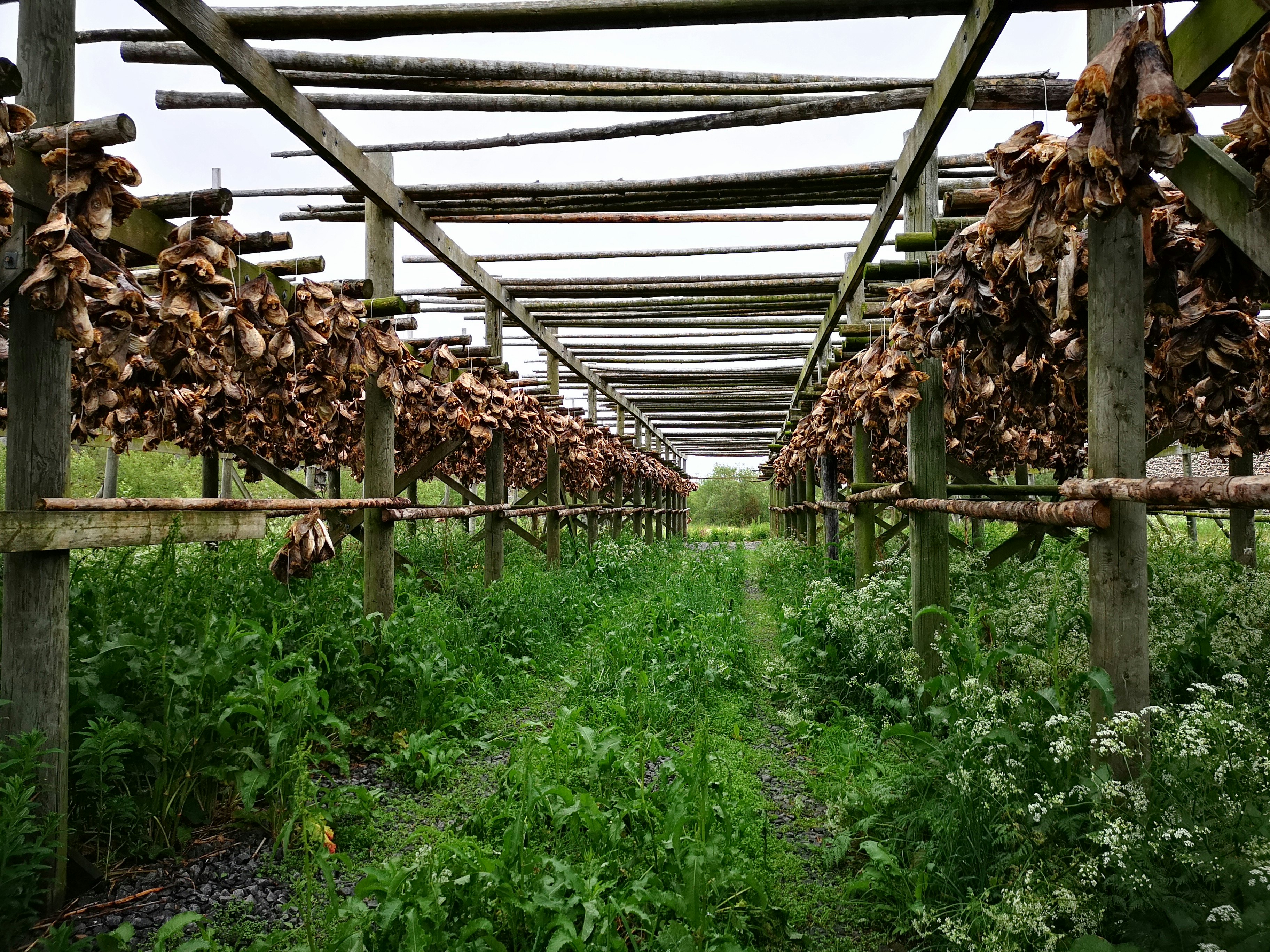
Snack on some chewy tørrfisk (stockfish)
Visiting the marvelous Lofoten Islands is among the top things to do in Norway. Once you’re there, you’ll see row after row of wooden racks laden with Atlantic cod drying for months in the brisk Norwegian air. It’s common to eat tørrfisk as a snack (like a fishy jerky), washed down with some beer. It’s also often rehydrated by soaking it in water, then baked, grilled or used in soups.
Where to try it: You won’t have any trouble sourcing tørrfisk on Lofoten. Sample the specialty at Bacalao, a casual harbourside place in Svolvær.
Savor the flavor of gravlaks (cured salmon)
Salmon is ubiquitous in Norway, and this particular incarnation sees it marinated in sugar, salt, brandy and dill, giving it a rich, powerful flavor and a melt-in-the-mouth texture. It’s typically served in thin slices, either with a simple salad or a creamy dill sauce.
Where to try it: Look out for it at seafood restaurants such as Fisketorget in Stavanger.

Discover that any time is vaffel time
This is a treat you’ll likely be familiar with, but the Norwegians have elevated the humble waffle to top-tier status. Even Oslo’s three-Michelin-starred Maaemo has been known to serve them – gastronomy-style, of course.
Thin, fluffy and oh-so-irresistible Norwegian waffles are usually served in heart-shaped slices. Vafler are perfect for breakfast, brunch, as an afternoon snack or for dessert, and are eaten with a variety of sweet and savory toppings. Smother them with your favorite jam, top them with ice cream or add some slices of brunost for double Norway points.
Where to try it: The proprietor may be Swedish, but that doesn’t stop Haralds Vaffel in Oslo from offering up what could well be the best waffles in the country.
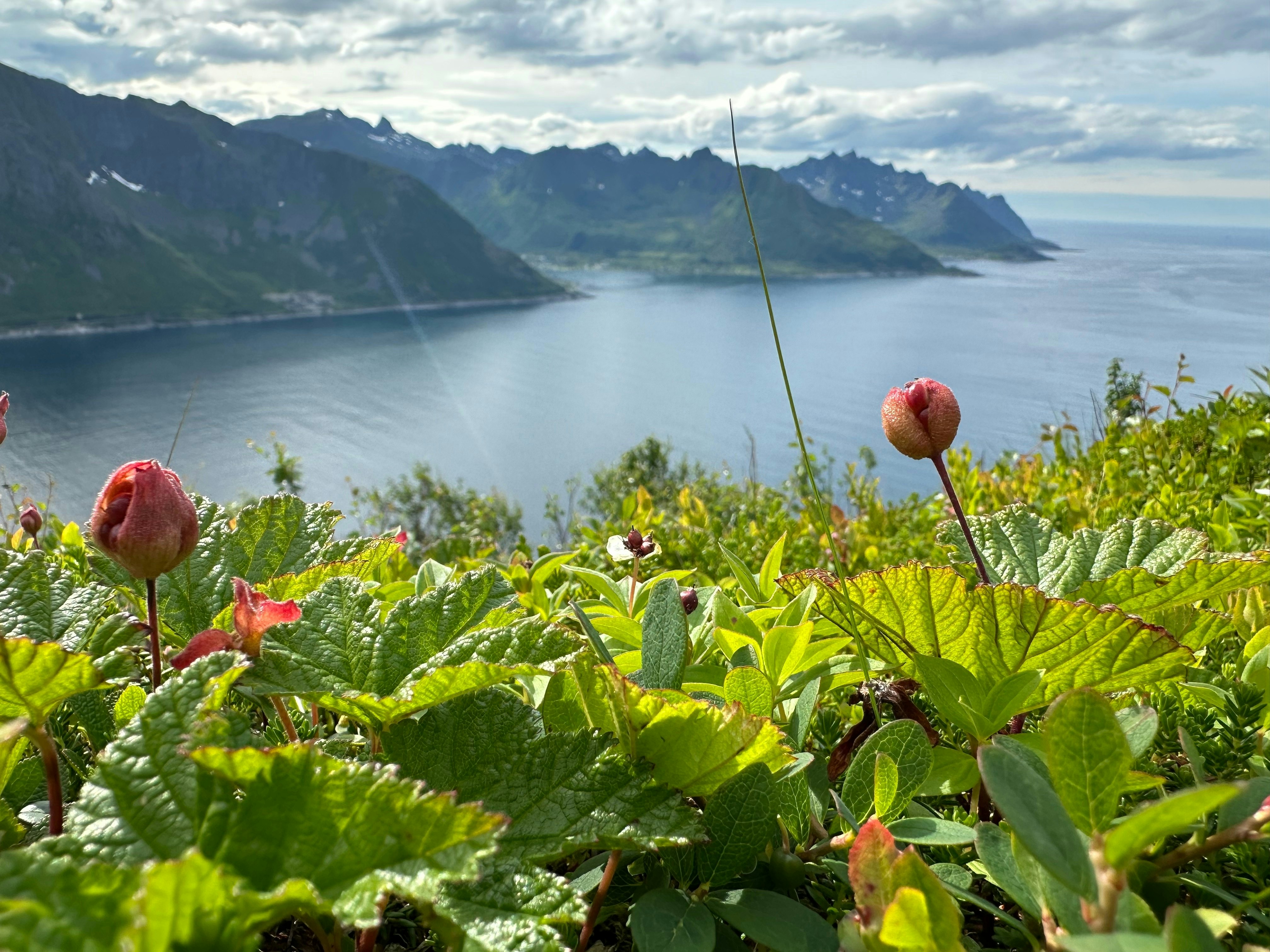
Eat elusive multebær (cloudberries)
These tart amber-colored berries are highly prized and considered a delicacy, growing one per stalk on open swampy ground. The season is fleeting – from July to mid-August – and some cloudberry patches are zealously guarded in Norway. Have them in the decadent dessert multekrem (cloudberry cream) – a confection of cloudberries, whipped cream and sugar – or try warm cloudberry jam dolloped over vanilla ice cream.
Where to try it: Keep your eyes peeled and forage them when you’re out hiking. Otherwise, pick up some frozen cloudberries or cloudberry jam in Norwegian supermarkets.

Say skål and supp some aquavit
The national spirit, aquavit (akevitt in Norwegian), is a potent dose of Norwegian culture made from potatoes and caraway liqueur. The name is derived from the Latin aqua vitae, the “living waters.” Although caraway is an essential ingredient, various modern distilleries augment the spicy flavor with any combination of orange, coriander (cilantro), anise, fennel, sugar and salt. Smoother than vodka but nonetheless fiery, the spirit is typically aged for three to five years (sometimes longer) in oak barrels, which gives it a caramel color.
Norwegians often drink it on special occasions such as Christmas, Norwegian Constitution Day (17 May) and Midsummer, but it’s perfectly acceptable to quaff it at any time of year.
Where to try it: Many restaurants and bars carry a large selection of aquavits, including Baklandet Skydsstation in Trondheim. For a truly special experience, book ahead for a tasting session at boutique distillery Inderøy Brenneri at Berg Gård in Inderøy. To buy a bottle to take home, you’ll need to go to one of the state-run liquor stores called Vinmonopolet.
Feel the warmth of rømmegrøt (sour cream porridge)
Sour cream porridge (a fluffy combo of porridge, milk and flour topped with cinnamon) is a staple Norwegian soul food that’s been around for hundreds of years. While rømmegrøt was once a dish reserved for holidays, today you can find it served in mountain hotels and wooden huts dotting the many scenic hiking trails.
For a traditional experience, ask for raspberry sauce on the side. A classic serving also includes cured meats and flatbread for a salty kick.
Where to try it: The best rømmegrøt can be found in the grand Norwegian countryside. Fjellstuer (mountain lodges) and seters (traditional summer mountain farms) serve the most authentic dishes – check out Hjerkinn Fjellstue and Herdalssetra.
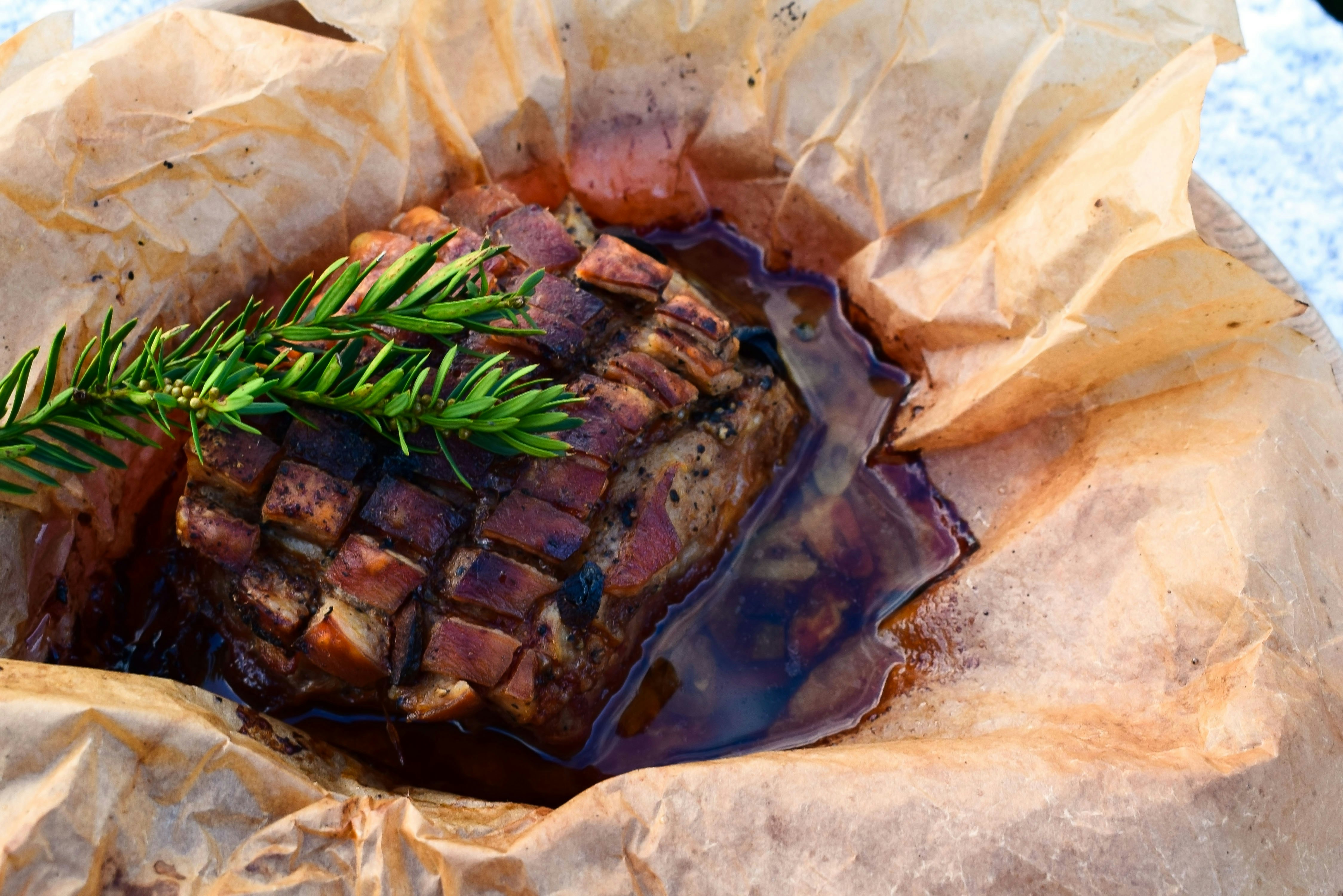
Don’t miss the Christmas ribbe (crispy pork belly)
The legendary ribbe is the star of the Christmas table in Norway. With a sliced crispy rind, soft texture and smoky flavor, Norwegian pork belly is a must-try. At the festive feast, mashed potatoes, red cabbage and medisterkaker (pork meatballs) are also served, as are drinks such as gløgg (mulled wine), juleøl (Christmas beer) and julebrus (a red-colored seasonal soda drink with strawberry or raspberry flavor).
Where to try it: Ribbe is only served during the Christmas season. Butcher shops sell the pork belly and restaurants add it to their holiday menus. Head to Mathallen in Oslo and Wesselstuen in Bergen to give this dish a try.
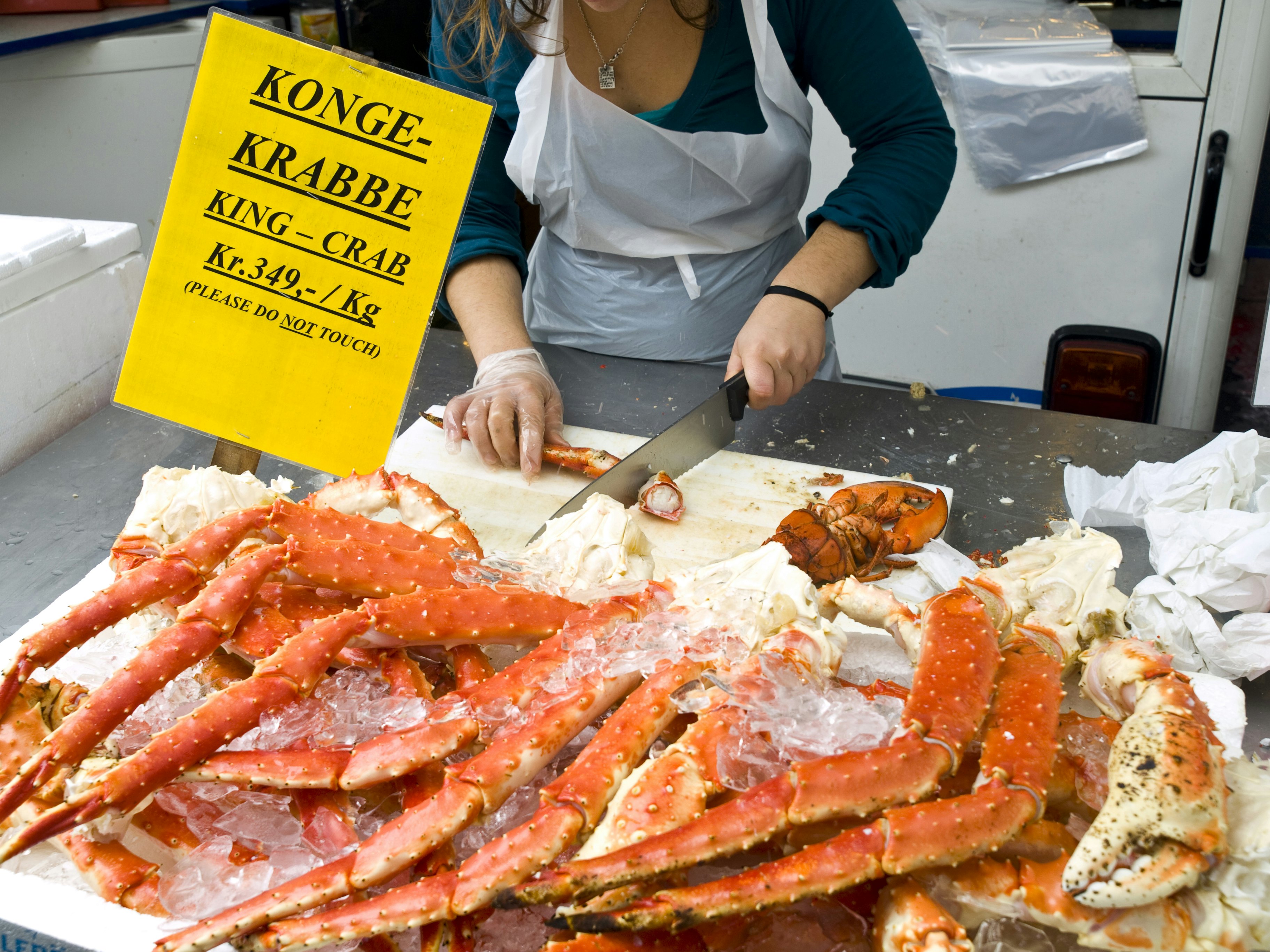
Taste the Arctic when you try king crab
Curiously, these giant crustaceans are not native to the Norwegian coastline. King crabs were released by Soviet scientists along Russia’s east coast in the 1960s and they eventually made their way to the cold Nordic coastline, where they were first captured in 1977. Thanks to that long migration, you can now indulge in the rich king crab meat that easily rivals a luxurious lobster in taste. The shoulder has the most filet and is prepared by steaming it in salted water or baking, usually with a butter topping.
Where to try it: Head to Tromsø to take part in a king crab experience that includes a scenic fjord ride and a cooked king crab tasting in an ice bar. For a more refined experience, Mathallen Tromsø is an excellent fine-dining restaurant with king crab meat on the menu.
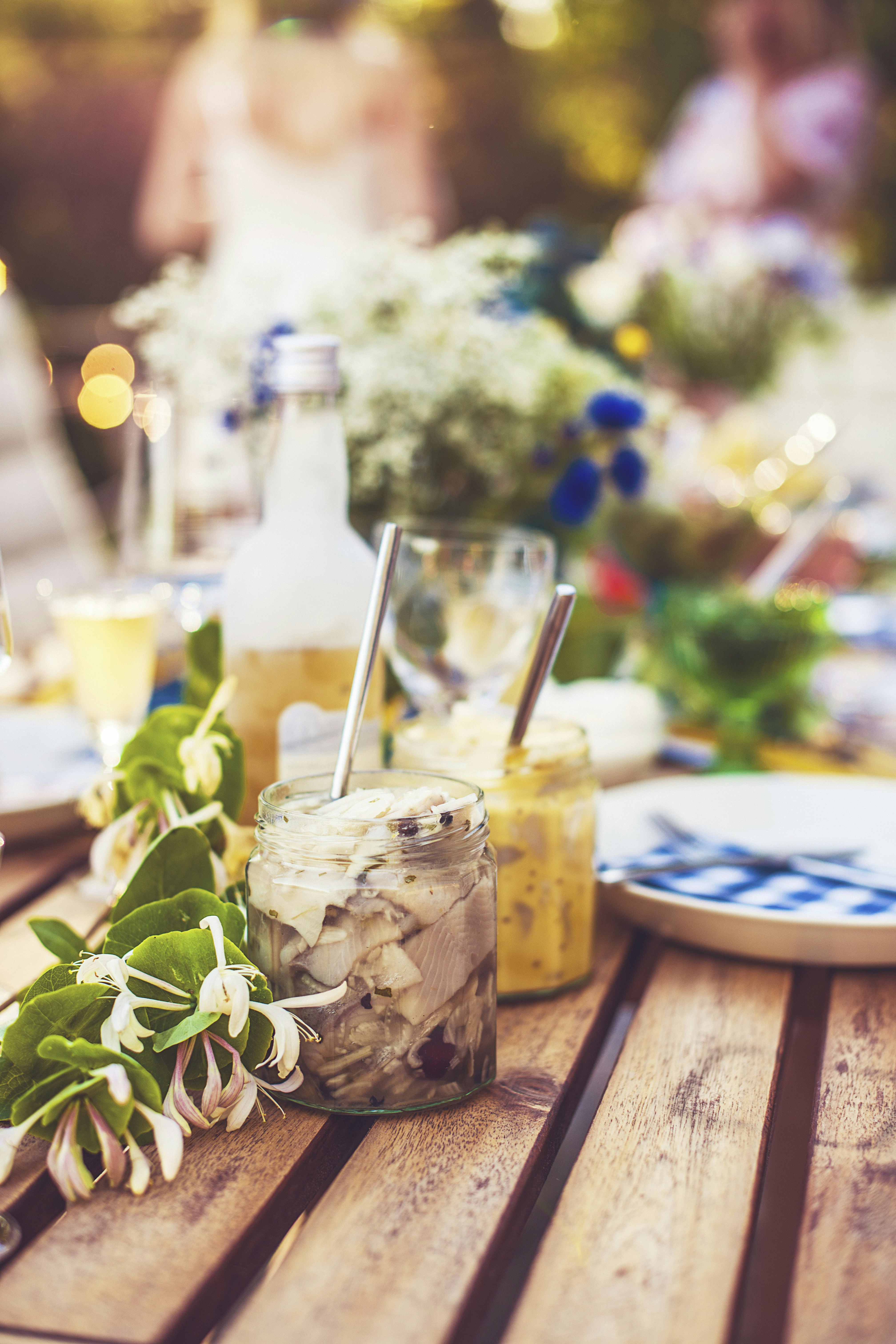
Explore different varieties of traditional pickled herring
Herring holds a special place in Norway’s culinary heart. This tiny fish has been a vital source of income for the country, allowing seaside towns’ economies to flourish. There’s even a jazz festival named after the fish – the Sildajazz in Haugesund.
Traditionally, pickled herring is a Christmas dish (called julesild), but you can also find many variations of the delicacy sold in supermarkets and served in restaurants as an appetizer. One of the most common variations is herring pickled in tomato sauce. Others include herring in mustard, curry or a creamy beet brine.
Where to try it: Every supermarket and grocery store has a pickled herring section where you can find this budget-friendly and nutritious appetizer. During the Christmas season, julesild is available at restaurants like Elias mat & sånt in Oslo and Baklandet Skydsstation in Trondheim.
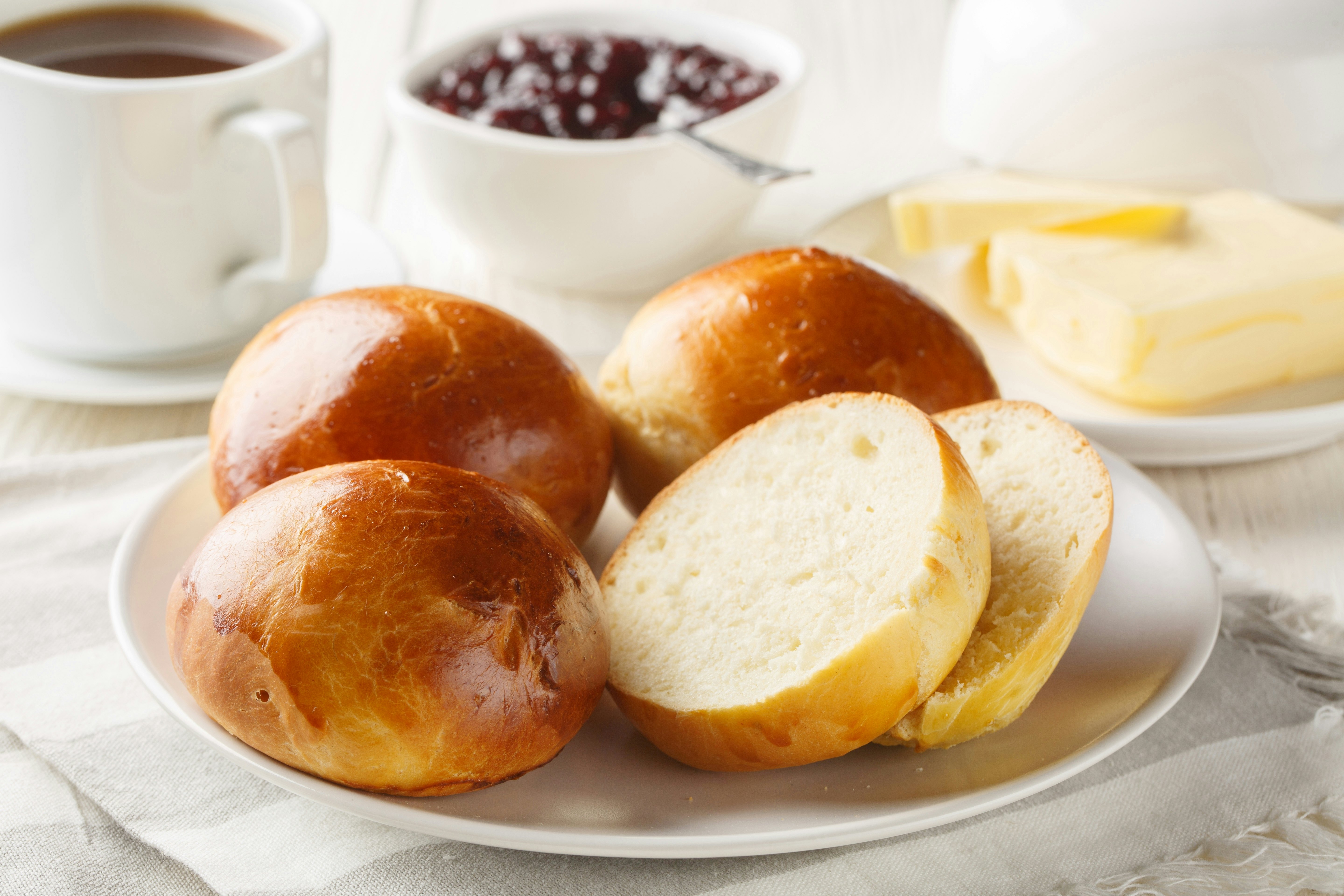
Treat yourself to boller, Norway’s favorite sweet treats
Boller (sweet buns) rule the dessert scene in Norway. They come in different shapes and with various fillings. The classic version is called hveteboller and features cardamon notes and a soft texture. The skoleboller features custard and coconut, the kanelboller contains cinnamon, the rosinboller contains raisins, and the fastelavnsboller features whipped cream.
Where to try it: There's a wide variety of boller at both Verdensbakeriet and Åpent bakeri in Oslo. Good Bread Floyen is like a bun kingdom in Bergen.
Vegetarians and vegans
As with many European destinations, the availability and quality of vegetarian and vegan options in Norway have improved dramatically in recent years. Most restaurants will offer vegetarian dishes, and, increasingly, many will have a vegan choice, too. Sometimes this may be a simple pasta dish, but you'll also find creative crepes and salads (although vegans won't appreciate the widespread use of cheese).
In general, the rule is that the larger the town, the more choices there are for animal-free fare. In most cities, you needn’t be limited to just one or two options on a restaurant menu; the selection of specialty vegan and vegetarian restaurants is growing in Norway. Food halls like Oslo Street Food often have a flavorful selection of meat-free, dairy-free dishes from various vendors. Or, for a push-the-boat-out experience, go to Bellies in Stavanger, which has elevated plant-based cuisine to high art.

Other foods worth trying
Pinnekjøtt: These dried, salted lamb ribs are traditionally eaten at Christmas, so you’ll probably struggle to find pinnekjøtt (pronounced pee-neh-shot) the rest of the year, but don’t pass up the chance to try this salty festive delicacy if you see it on the menu.
Lutefisk: More common in homes than restaurants and something of a staple for older folk, lutefisk (dried cod, reconstituted with water and lye) is often eaten along with bacon.
Raspeballer: These potato dumplings are a welcome starchy accompaniment to many a meat dish (also called potetball or komle).
Kjøttkaker: Meatballs obviously aren’t unique to Norway, but the Norwegian version (literally translating to ‘meat cakes’) tends to be bigger and come with a generous glug of gravy.
Saltlakris: Also not peculiar to Norway, salty licorice is a Nordic taste sensation. It’s popular in the country as an alternative to sweet candy and as sprinkles for ice cream.
Keeping an eye on your kroner
We’d be remiss if we didn’t touch on the fact that eating out in Norway can be prohibitively expensive, and even “affordable” options will have you counting every krone. Shifting your main meal to the middle of the day will help you experience Norway on a budget. Many great restaurants offer lunch specials that are just as tasty and varied but tend to be kinder to your wallet.
A year in food
Food festivals are great for sampling the most authentic local food and trying many dishes at once.
Summer
The Trøndelag Food Festival brings delicious scents to the streets of Trondheim at the end of July and the Skalldyr Festivalen (Shellfish Festival) celebrates all things seafood in Mandal during August.
Fall and winter
Matstreif Food Festival is the country’s largest, taking place in September in Oslo and there are also gems like Norsk Rakfiskfestival in Fagernes, fully devoted to semi-fermented trout, in late October and November.















